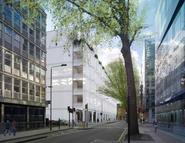Jochen Braun
Wednesday 24th May 2017
Time: 4pm
Ground Floor Seminar Room
25 Howland Street, London, W1T 4JG
Hierarchical dynamics of visual inference
Visual input is noisy, variable, and ambiguous. Optimal inference of physical causes is challenging even for a restricted set of causes (e.g., orientations and spatial frequencies). It is well understood (e.g., Veliz-Cuba et al., 2016) that stochastic dynamical systems can approximate optimal inference by continuously accumulating and evaluating visual evidence. I will argue that the dynamics of multi-stable perception is consistent with just such an inference mechanism. Its psychophysically observable characteristics fully constrain a hierarchical dynamics with three levels, the lowest of which may conceivably correspond to cortical columns or clusters of columns. Given suitable inputs, this hierarchical dynamics accumulates and evaluates noisy evidence to make nearly optimal categorical discriminations. Moreover, its dynamical features seem to afford functional benefits in a volatile world, such as balancing stability and sensitivity of inference.
References:
Cao, Pastukhov, Mattia, Braun (2016) Collective activity of many bistable assemblies reproduces characteristic dynamics of multistable perception. J. Neurosci., 36: 6957-72.
Veliz-Cuba, Kilpatrick, Josic (2016) Stochastic models of evidence accumulation in changing environments. SIAM Review, 58: 264-289.
 Close
Close



_RGB.jpg)